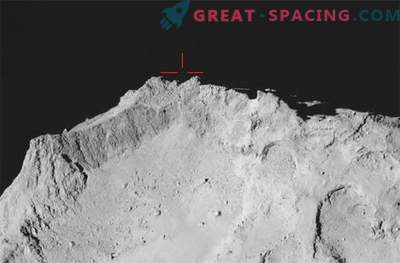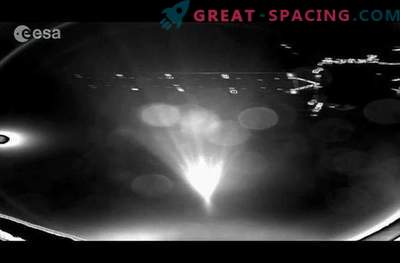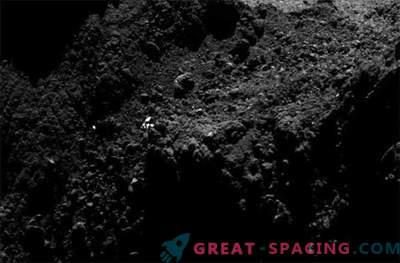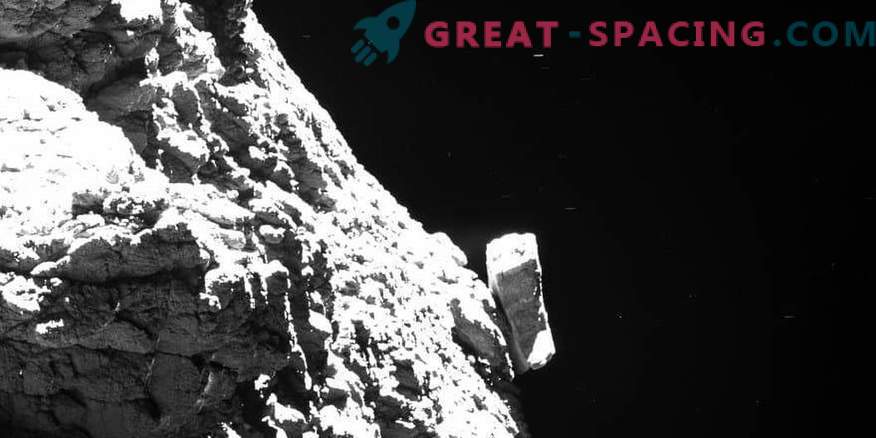
It is easy to be distracted by an amazing formation on the right, capable of representing the broken part of the comet's layered structure. But on the image captured a small hint to the presence of the probe Phila. A thin vertical line with a wide top is visible at the top left - one of the three legs of the fillet
All high-resolution images and basic data from Rosette’s pioneering mission on comet 67P / Churyumov-Gerasimenko are now available in ESA archives. In the last issue, we added pictures of the search for the Fila's landing module and the final descent of the Rosette to the surface of comets.
Images were extracted with the help of the OSIRIS camera group in May and now they have been processed and released in the archive. Images from the spacecraft navigation camera are also available, and the planetary scientific archive contains publicly available data from all 11 scientific instruments.
The final batch of high-resolution frames from the OSIRIS camera from Rosetta covers the period from the end of July 2016 to the end of the mission on September 30, 2016. It summarizes the total number of shots up to 100,000 for the entire period of a 12-year journey.
The trajectory of the spacecraft around the comet gradually progressed over the last two months of the mission, bringing it closer to a point along elliptical orbits. This made it possible to produce impressive images of the object at a distance of 2 km from the surface, emphasizing the contrasts between the smooth and dusty terrain. The most impressive shots seem to be the Fila module search set. The difficult conditions associated with dust and gas emanating from the comet, along with the printing house of the local landscape, caused problems in obtaining the best kind of Filya location. But miraculously managed to find the module a few weeks before the end of the mission. In the last hours of the mission, when Rosetta came even closer to the surface, it was possible to explore the ancient pit.
The final set of images becomes an incredible value for the scientific community, allowing you to fully explore comets. Scientists can not only examine dust, gas and plasma angle, but also understand the role of comets in the formation of the solar system.
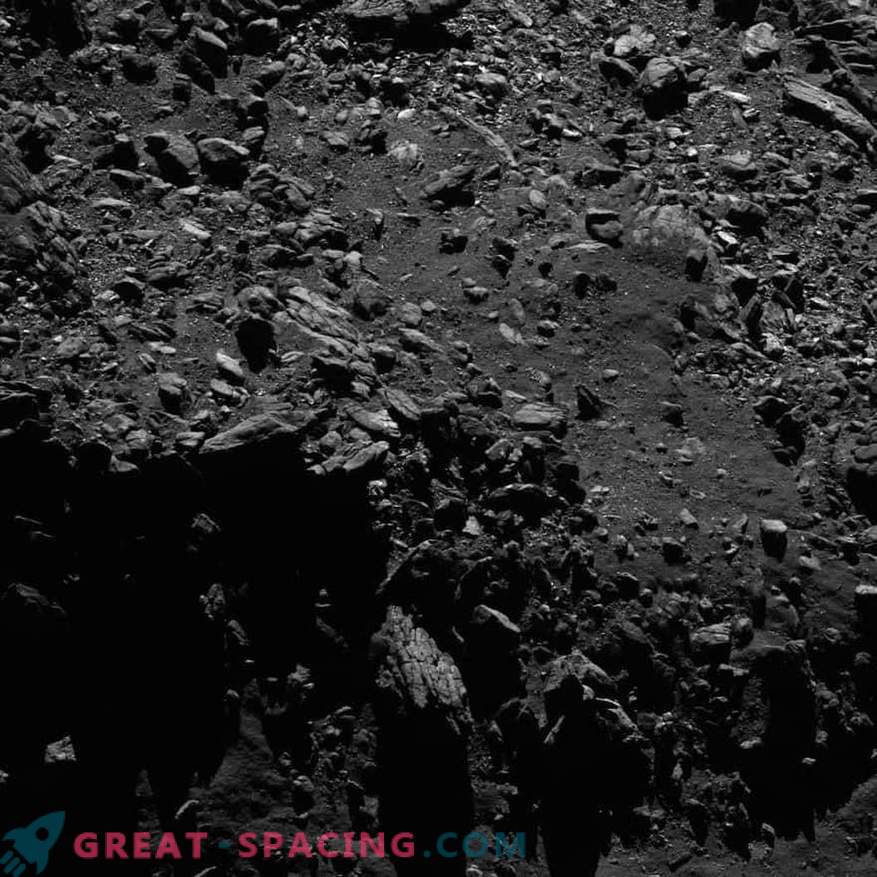
The OSIRIS narrow-angle camera from Rosetta captured a detailed review of comet 67P / Churyumov-Gerasimenko on September 2, 2016 from a distance of 2.1 km from the comet's surface, giving a resolution of 4 cm per pixel



